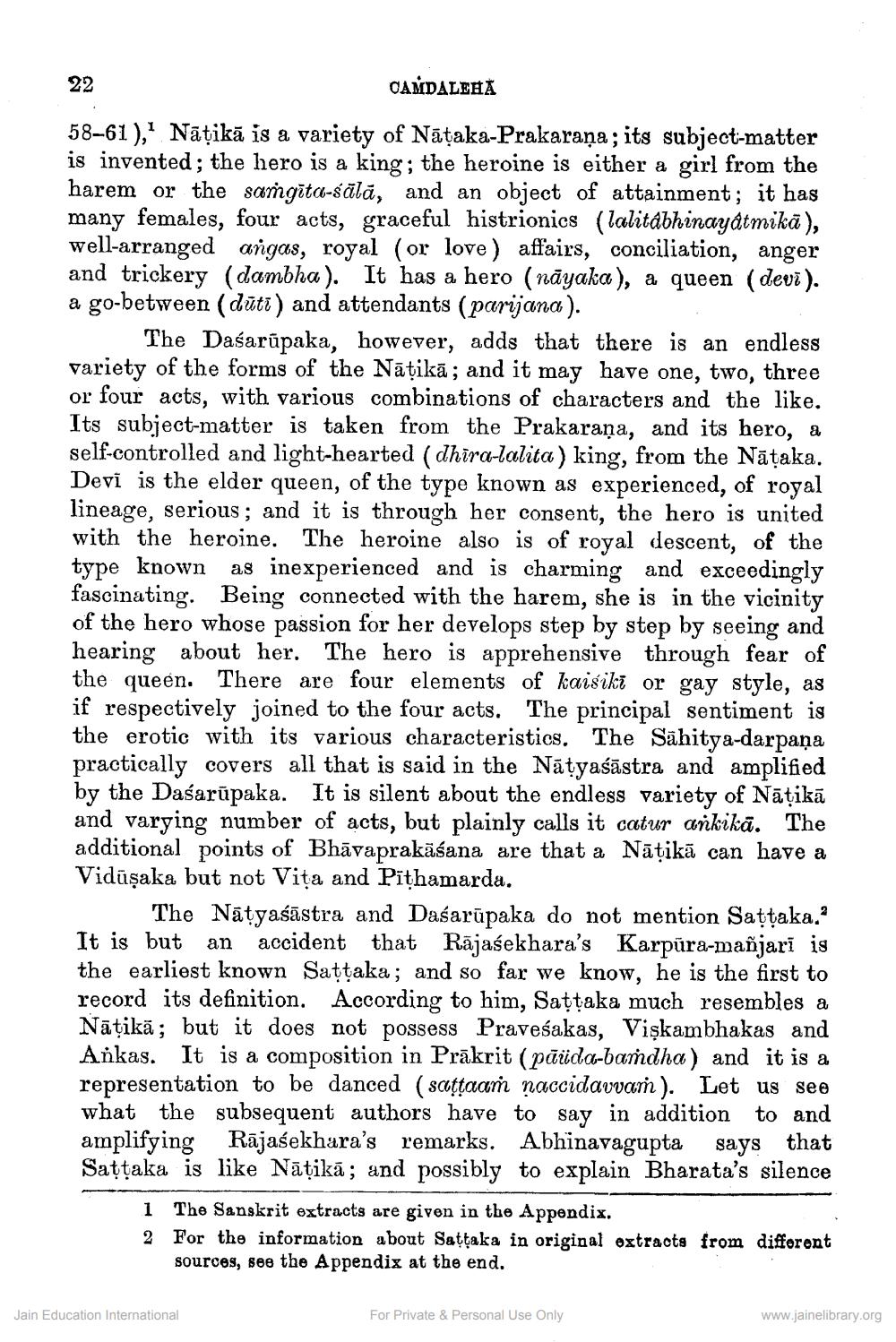________________
22
CAMDALEHA
58-61)," Nātikā is a variety of Nātaka-Prakaraņa; its subject-matter is invented; the hero is a king; the heroine is either a girl from the harem or the samgita-śālā, and an object of attainment; it has many females, four acts, graceful histrionics (lalitábhinayatmikā), well-arranged angas, royal (or love) affairs, conciliation, anger and trickery (dambha). It has a hero (nāyaka), a queen (devi). a go-between (dūtī) and attendants (parijana).
The Dasarūpaka, however, adds that there is an endless variety of the forms of the Nātikā; and it may have one, two, three or four acts, with various combinations of characters and the like. Its subject matter is taken from the Prakaraṇa, and its hero, a self-controlled and light-hearted (dhira-lalita) king, from the Nāțaka. Devi is the elder queen, of the type known as experienced, of royal lineage, serious; and it is through her consent, the hero is united with the heroine. The heroine also is of royal descent, of the type known as inexperienced and is charming and exceedingly fascinating. Being connected with the harem, she is in the vicinity of the hero whose passion for her develops step by step by seeing and hearing about her. The hero is apprehensive through fear of the queen. There are four elements of kaisiki or gay style, as if respectively joined to the four acts. The principal sentiment is the erotic with its various characteristics. The Sahitya-darpaņa practically covers all that is said in the Nātyaśāstra and amplified by the Dasarūpaka. It is silent about the endless variety of Nātikā and varying number of acts, but plainly calls it catur ankikā. The additional points of Bhāvaprakāśana are that a Nātikā can have a Vidūşaka but not Vita and Pithamarda.
The Nātyaśāstra and Dasarūpaka do not mention Sattaka.? It is but an accident that Rājasekhara's Karpūra-mañjarī is the earliest known Sattaka; and so far we know, he is the first to record its definition. According to him, Sattaka much resembles a Nātikā; but it does not possess Praveśakas, Viskambhakas and Ankas. It is a composition in Prākrit (pāüda-baṁdha) and it is a representation to be danced (sattaań naccidavvam). Let us see what the subsequent authors have to say in addition to and amplifying Rājasekhara's remarks. Abhinavagupta says that Sattaka is like Nātikā; and possibly to explain Bharata's silence
1 The Sanskrit extracts are given in the Appendix. 2 For the information about Sattaka in original extracts from different
sources, see the Appendix at the end.
Jain Education International
For Private & Personal Use Only
www.jainelibrary.org




